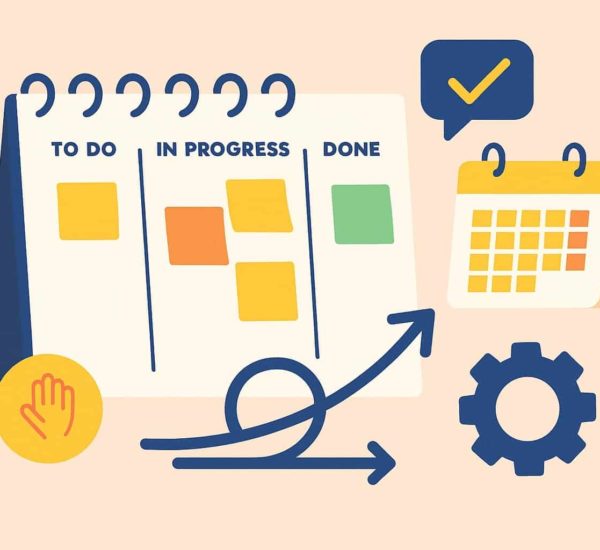A diverse workforce is imperative to any organization. A diverse workforce refers to one that includes people with all kinds of characteristics. Please note that diversity goes beyond the color, skin, race, religion, and ethnicity of an employee.
Diversity encompasses personality, education, sexual orientation, interest, hobbies, etc. Different cultures, races, talents, and cognitive abilities follow the list.
To cope with the ever-increasing competition, businesses must recruit and retain diverse talent. And that is where inclusion comes in. It is the company’s efforts of making employees from diverse backgrounds feel part of the team. Inclusivity is all about fostering an environment where diversity is appreciated and accepted.
Also, note that diversity and inclusivity complement each other. Without inclusivity, diversity has no meaning. Therefore, both of these should be prioritized by the management of a company.
Management should put in extra effort to develop diversity and inclusion activities to build a happier workforce.
This article will recommend some interesting diversity and inclusion activities. But first, let us understand the importance of inclusion and diversity in the workplace.
Importance of Inclusion in the Workplace
A diverse and inclusive culture impacts employees in several ways. Listed below are some of the benefits of having inclusivity and diversity in a workplace:
- Employees feel respected that they have a voice in the organization.
- It becomes easier for peers to collaborate and work with each other.
- Employees enjoy a healthy relationship with their manager because they feel cared for.
- Communication among peers becomes honest and transparent.
- Satisfaction and motivation at job increases.
- With greater autonomy, employees feel committed to performing better.
- The company is able to train talent thereby reducing the turnover rate.
- Employees work with confidence because they don’t have the fear of being judged, discriminated or invalidated.
With all these benefits, it is evident that diversity and inclusion are good news for both the business and employees. Therefore, managers should make them a priority in their to-do list.
Who Is Responsible for Inclusion in the Workplace?
A common misconception that most people have is that the responsibility to incorporate inclusion and diversity in a workplace rests on the shoulders of HR. While HR plays a role in formulating diversity and inclusion activities, they are not entirely responsible for them.
Every individual in the company is accountable to make people feel safe and valued. So, this includes employees, managers, C-suite executives, and entry-level employees.
When an organization has values like equity and respect firmly embedded in the system, every employee feels personally accountable to put them into practice.
When a CEO delegates an ‘inclusion project’ to HR, they should take equal interest in it from the beginning. Follow-up, ask for updates, suggest recommendations and give timely feedback. When this happens, the results turn out outstanding.
So while HR will have diversity and inclusion training and policies in place, it is the effort of both the employees and management to put them to the best use.
Because managers impact employees considerably with their day-to-day interactions, they must show a keen interest in fostering inclusion.
Diversity and Inclusion Activities for Remote Teams
Employees all around the world have been adapting to remote work at a fast pace. This shift has had an impact on employees’ sense of inclusion and is a matter of concern. The following strategies can help you inculcate inclusion in remote teams who will be in the challenging situation anyway:
- When people work from home, they are handing multiple things along with work. Encourage people to speak about their feelings, work and how are they managing the shift.
- Work from home life impacts everyone differently. For some, it may be relaxing while for others it can be hectic given the household responsibilities. In such a situation, support them as much as you can. Connect them with mental health resources and offer them the flexibility they need to pull off work or deadlines.
- Check with your employees regularly and encourage everyone on the team to stay in touch with each other. Facilitate virtual team-building activities and coffee breaks so everyone can stay connected.
Three Tips to Build Inclusive Workplaces
Support All Identities
Our identities are the same inside and outside the workplace, but people think otherwise. Leaders should see their employees as humans, not just workers. That means that leaders ask questions, show interest and demonstrate support for people’s identities. Consequently, employees feel valued and validated.
As a leader, find out about your employees’ religion, cultural days, and holidays. Incorporate these holidays in the calendar and let them take time off.
Offer a Hand in Trying Times
Always remember that world events affect employees substantially especially if minority or specific groups are targeted. Whether events touch race, gender, ethnicity, religion, or identity, managers and HR must check in with those affected and make a formal company statement. This will make employees feel safe and less hesitant to ask for support.
When any such events occur, let your team know that you recognize the impact. Empathize with them and let them know that you have their back. Ask them if they need some time off and in case you have an open-door policy, remind them they can come to you and discuss anything anytime.
Model Inclusive Behavior
As a manager or leader, people will look up to you. So you must be mindful of how you act in front of them. A few examples in which you can display an inclusive behavior are:
- Stop or interrupt anyone speaking in the rude or harmful language. That also means watching your own too.
- Actively listen to underrepresented voices.
- Give due credit to people who have worked and earned it.
- Delegate tasks equitably.
- Challenge the status quo that exists for underprivileged groups.
9 Examples of Diversity and Inclusion Activities in the Workplace
Flower Petal Activity
The aim of this exercise is to encourage employees to learn about each other. The steps are as follows:
- Divide the participants into groups of 4-10.
- Give each group a chart paper and a few colorful markers.
- Each group has to draw a large flower with a round center and number of petals equivalent to the number of group members.
- Each participant needs to fill the petal with their unique attributes.
- The center of the flower should be filled with characteristics common to the group.
- Each group must share their flowers with other groups to discuss similarities and differences.
This exercise facilitates open communication and social interaction.
Potluck Lunch Party
It’s always a great idea to celebrate anything with food. So why not diversity? Organize a potluck lunch party and ask employees to bring in food that represents their culture and heritage. Isn’t this a great and creative way of learning about other cultures?
Small Art Events
We recommend that you make better use of the cafeteria or lounge area in your workplace. Use these common areas for small events where employees can represent their culture and art. Such events give rise to open discussions and feedback about diversity and inclusion. Employees get familiar with different backgrounds and cultures and eventually start accepting them.
Follow the Diversity Calendar
If you truly want your employees to experience a sense of belonging, then celebrate all holidays. Celebrating just the standard holidays such as Christmas can make people from diverse backgrounds feel left out. So what should you do? Have an extensive and diverse holiday calendar.
This can serve as a great opportunity for everyone in the organization to learn about multi-cultural holidays and festivities. It is also a great way to engage employees.
Step Apart and Together
This activity highlights the difference and similarities. Here’s how you can go about it:
- Ask two employees to come forward and stand face to face with each other.
- The rest of the team will call out things like the place of birth, religion, hair color, etc.
- The two participants will step apart when there is a difference and step forward when they share a similarity.
This activity makes one learn a simple lesson. People will always be different from each other but they will always be connected in some way.
I Am but I Am Not
This game is one of the best to confront stereotypes and foster inclusivity. Each participant should make two columns on a piece of paper with headers ‘I am’ and ‘I am not’. However, between the two headers, they should also add ‘but’. So it will create a phrase like I am a woman but I am not weak.
Have each participant make at least 5 statements and ask them to share them with everyone. Encourage the rest of the participants to have a respectful discussion on the stereotypes.

Walk in Others’ Shoes
This exercise helps employees mentally walk in someone else’s shoes. This activity works by the following steps:
- Have your team mention the diverse backgrounds that the team has.
- Pair two people from different backgrounds.
- Now ask everyone to write a few lines on the challenges that the member from another team could possibly face.
- Allow the team to discuss these challenges.
Basically, this exercise allows colleagues to empathize with one another. By learning about the challenges that an employee could face, the rest of the team becomes more kind and polite towards them. It encourages employees to have a positive attitude towards minority groups. Consequently, discrimination, and mistreatment towards marginalized communities will significantly reduce.
Find Out About People’s Feelings
Part of how people perform at work says a lot about how their lives are outside work. If you can simply recognize it and encourage people to share their lives outside work which will go a long way in fostering inclusion at the workplace.
Try one of the following to kickstart a one-on-one with employees. This will definitely set the tone for vulnerability and openness.
- Encourage employees to share something small and something big from their lives. It could be something as small as ‘I missed the bus in the morning’ to something like “I have a family member who is sick and that doesn’t let me focus on work.”
- Ask employees to share the best and worst parts of their week. This will let employees share their challenges and accomplishments no matter how big or small.
The Privilege Walk
This activity aims to increase awareness about privilege and discrimination. The privilege walk helps people understand more about themselves and others:
- Explain to the group that some people enjoy certain privileges that others do not.
- Ask the group members to stand in a line.
- Start reading out a series of statements.
- Ask them to take a step back or forward when a particular statement applies to them.
The statements can be like:
- If you rely on public transport, take a step back
- If you’re left-handed, take a step forward
- If you faced sexual harassment at work, take a step back.
Finally, ask everyone to have a look around the room and see where people are positioned. Next, make them sit in a circle and encourage them to have a discussion on how they are feeling. This will foster inclusion in the workplace.
Is Your Team Inclusive?
The ultimate goal of any organization is to recruit and retain good employees. And one of the ways of achieving this is to build an environment that is safe, diverse, and inclusive. Management of an organization should invest time, effort, and money in developing policies that create an inclusive culture.
A workplace should be such where employees feel secure and comfortable in voicing their views and sharing feedback. Moreover, employees should feel a sense of belonging while working. They should feel emotionally attached to the organization, its people, and its values.
We recommend you implement certain diversity and inclusion activities in your workplace to ignite growth and support.




